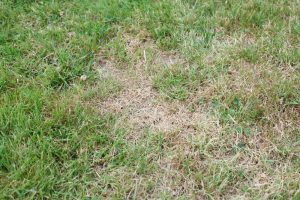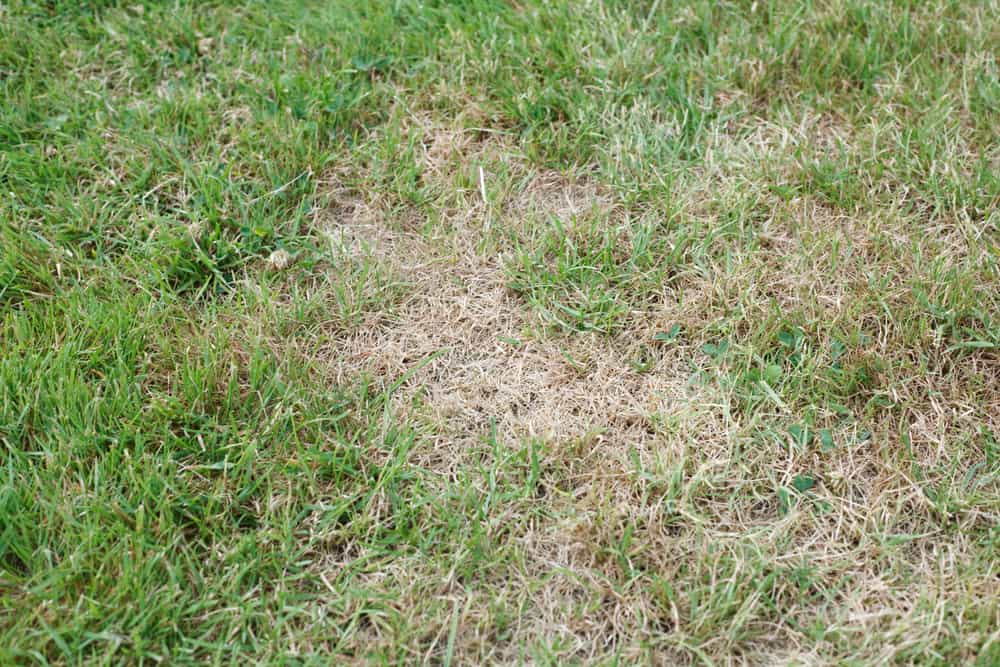Lawn diseases are not typically a threat to a homeowner’s lawn; however, an occasional outbreak can occur in certain situations. A well-maintained lawn will usually remain healthy and disease-free. If you see a dead or dying spot on the lawn, it may be easy to assume the grass just needs watered, but this is not always the case. Although lawn diseases aren’t a huge threat, it is still important to know the common lawn diseases and how to treat them in case you run into any problems with your lawn.
Anthracnose
- A reddish-brown spot on leaves.
- Can vary in size from 2 inches to 10 feet.
- The favorable conditions for Anthracnose are warm to hot temperatures (75-95 degrees) with high humidity and excess rain.
- How to treat: Fungus Control for Lawns or Disease Control
Leaf Spot
- Scattered to general yellow, tan, or reddish-brown discoloration or thinning of turf.
- Individual leaves may have a circular or long purple, brown, red-brown, or black spots surrounded by a yellowish halo.
- The favorable conditions for Leaf Spot are prolonged moist, cloudy weather with moderate temperatures.
- How to treat: Fungicide Application

Pythium
-
- Destructive root-parasitic fungus.
- Can multiply very fast and liberate microscopic spores that infect roots.
- Attacks seeds and seedlings with little resistance to disease.
- The favorable conditions for Pythium are moderate to warm weather (70-85 degrees) with excess humidity and thatch.
- How to treat: Fungicide Application
Red Thread
-
- Irregular shaped patches of tan grass with red-brown cast. Dead leaves will be mixed in with healthy leaves for a ragged appearance. Patches will form an irregular area of blighted grass.
- The favorable conditions for Red Thread are cool temperatures (65-75 degrees), long damp and humid weather with slow-growing and stressed turf.
- How to treat: Fungicide Application
Rust
-
- Weakened or thin turf with red-brown or yellow-orange color. Your leaves may have small yellow flecks which will rupture to round, powdery spore-filled pustules which rub off easily on shoes, clothes, and animals.
- The favorable conditions for Rust are moderate to warm (70-85 degrees) temperatures, heavy dew, light rain, low fertility and soil moisture and compaction.
- How to treat: High Nitrogen Blend of Fertilizer
-
- Grey Snow Mold (Typhula blight): infects the leaf tissue.
- Pink Snow Mold (Fusarium patch): infects the crown of the plant, causes more severe injury than grey snow mold.
- Causes: Extended period of snow on the ground not completely frozen, under leaves not cleaned up or in grass that should’ve been mowed one more time before winter.
- How to treat: once the infected area is dried, it will cease and the turf will grow out and renew. If you wish to speed up the process, you can lightly rake the area to speed up the drying process, overseeding or topdressing the area.
Powdery Mildew
-
- Moldy looking white to light gray growth on grass blades.
- The favorable conditions for Powdery Mildew are mild temperatures (65 degrees) with damp, moist weather in shady areas.
- How to treat: Fungus Control for Lawns
Stripe Smut
- Stunted pale-green blades.
- Spores form long black stripes on the grass blades and the blades curl and die.
- The favorable conditions for Stripe Smut are cool temperatures (50-60 degrees) with excess moisture.
- How to treat: Fungus Control for Lawns
Again, a properly maintained lawn usually prevents these diseases from occurring; however, by knowing what to expect, you will be more likely to catch the problem before it becomes too serious. When you have questions or need help on your lawn care, Snappy’s Outdoor Equipment can help you in many ways. If you’re not sure what all we offer, check out our service area page! Or, check out our MVP program and how it helps save money and time.



